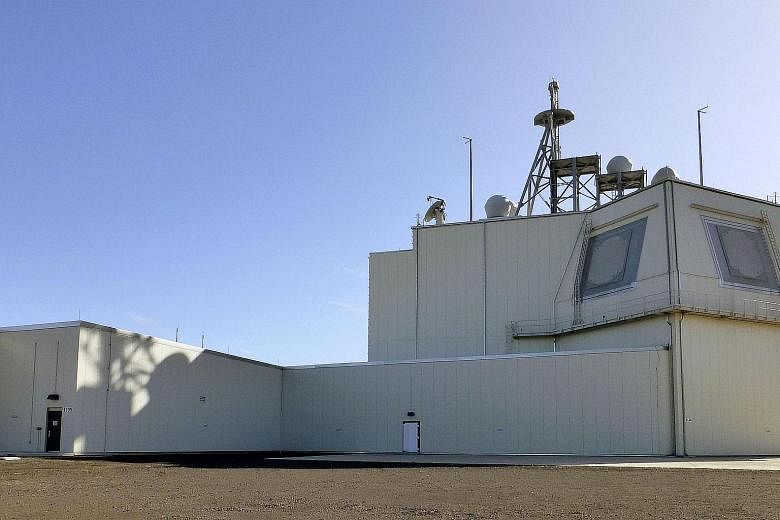TOKYO - Japan approved the development of two Aegis warships and a new type of long-range "stand-off" cruise missiles on Friday (Dec 18), as security fears grow over Chinese assertiveness in regional waters and North Korean missile technology.
But Prime Minister Yoshihide Suga's first major defence policy decisions since taking office did not include an approval of the acquisition of pre-emptive strike capabilities.
His predecessor, Mr Shinzo Abe, had directed that a decision be made on this by year-end in one of his final acts in office.
Still, this is a politically sensitive issue given Japan's war-renouncing Constitution, even as experts debate that it might be increasingly necessary for Japan to take more proactive steps to protect its territory amid a harsh geopolitical environment, rather than rely on its unpredictable security ally, the United States.
Although North Korea had, as recently as in 2017, lobbed missiles over Hokkaido, Japan has of late been citing China as the bigger security threat.
"The security environment around our south-western islands is becoming harsher as China increases its naval activities," Defence Minister Nobuo Kishi told a news conference on Friday.
"In the tense situation, stand-off missiles that can attack enemies while securing the safety of our troops from afar will be key to defending our islands," he said, referring to the disputed East China Sea islets, known as the Senkakus to Japan and the Diaoyus to China.
Friday's decisions came days before the Cabinet is set to decide on Monday a budget for the next fiscal year starting April.
The Defence Ministry has asked for a record 5.49 trillion yen (S$70.6 billion), a 3.3 per cent increase over the initial defence budget for this fiscal year.
The development of the stand-off missiles is expected to take five years and cost 33.5 billion yen. These are expected to be stealth, have a range of 1,000 km and can launched from aircraft or ships.
Separately, Japan will also build two new Aegis warships that will replace the scuppered land version of the missile defence system, known as the Aegis Ashore.
Tokyo abruptly ditched the plan in June following local opposition plus technical and safety issues that would cost too much to fix.
The Defence Ministry said it will install Aegis radars with three times the range of older Aegis systems on the two new ships, which will swell the size of the country's Aegis destroyer fleet to 10.
They cost at least 500 billion yen - 100 billion more than the dropped Aegis Ashore plan - and will take five years to build. But they can be more flexibly deployed and harder to attack than the immobile land-based system.
Still, security experts question if the latest steps are enough, amid the vast expansion of Chinese defence budget and the development of its technology like hypersonic glide missiles that travel faster than the speed of sound.
Dr Tosh Minohara, who chairs the Research Institute for Indo-Pacific Affairs think-tank, raised another fear: "Japan's military is severely undermanned. None of the hiring targets are being met."
As China will likely respond with weapon and budget upgrades, he said: "The Chinese can completely overwhelm Japan in the Sun Tzu art of war and win without fighting."


